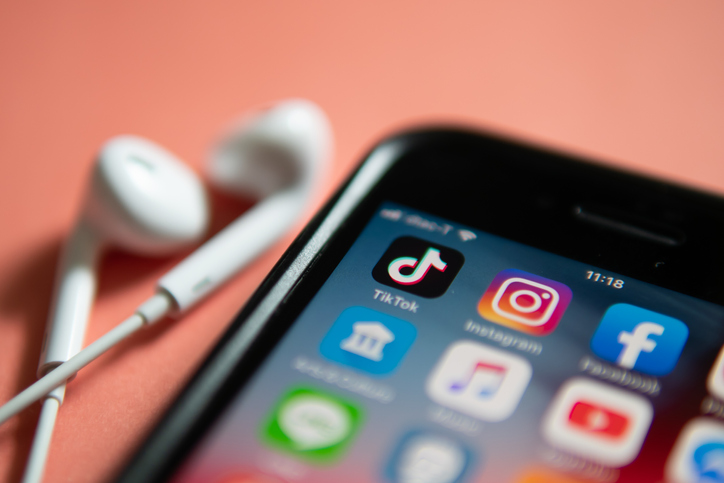Oracle Sort of Buys TikTok (but Not Really)

Larry Ellison proves that customer acquisition cost (CAC) is no barrier in Oracle’s conquest to expand its cloud credibility and market share. The announcement is murky at the moment, but the particulars indicate that Oracle and ByteDance will enter into a technology partnership to host the U.S. operations of TikTok. This allows TikTok to escape planned shutdown and gives the U.S. government some degree of oversight into the operations of TikTok.
If the partnership seems strange, don’t worry, it is. Geopolitics, politics and the DIME (diplomacy, information, military, and economy) model of nation-state influence usually are, especially if viewing this solely from the technology, marketing, or security and risk angles. Let’s examine what each party gets out of the deal and the externalities in play:
Oracle will buy its way to cloud relevance
Oracle is frustrated at being behind the global top four hyperscalers in public cloud revenue (behind Amazon Web Services, Microsoft Azure, Alibaba Cloud, and Google Cloud) and has been vying with IBM to grow its cloud in two dimensions at once: expand its penetration in the traditional enterprise and prove its cloud platform’s scalability and “hip factor” with well-known brands like Zoom. Nothing is more hip than TikTok at the moment, and TikTok has 100 million monthly active users in the U.S., putting a checkmark on both of Oracle’s goals.
This probably doesn’t buy Oracle much enterprise credibility, but it does buy the company visibility and exposure. Competitors have pioneered this approach: In 2017, Google Cloud won the right to host Snapchat’s infrastructure.
This also gives Oracle access to a (small) monetization stream that its hyperscaler competitors all possess: owned advertising inventory. This partnership may finally open this avenue up to Oracle, who has traditionally operated in the advertising technology side of the equation.
Oracle will gain deeper U.S. insight into TikTok
Larry Ellison has a long history of working with the U.S. government — specifically the intelligence community. Oracle’s first customer was the CIA, and the company is named after a CIA project Ellison and cofounders worked on prior to starting the company.
Based on the ambiguity in the current deal, it’s unclear exactly what degree of insight this will provide — and it appears Oracle gains little control over TikTok — but the links between the U.S. government and Oracle certainly make the deal more likely to pass through White House review, which is required before the partnership is authorized.
ByteDance offloads geopolitics and keeps its secret sauce safe
The most valuable asset for ByteDance is the intellectual property (IP) within TikTok — namely, the algorithmic models at the core of TikTok for content recommendation, which is continuously refined over a huge data set that will continue to grow. In an effort to show some transparency, ByteDance recently unveiled details of how these algorithms work.
This is a massive competitive moat for ByteDance, and this partnership excludes this item. The company must exclude it because the Chinese government updated its regulated catalog for technology export on Aug. 30, and ByteDance cannot sell the core TikTok IP without permission. That makes a deal with some degree of oversight by a U.S. company friendly with the intel community tolerable if it means continued operations in the U.S. market.
So, as a short–term measure to avoid the forthcoming ban, this partnership makes a great deal of sense, but it doesn’t necessarily end the saga of where TikTok eventually lands.
TikTok users and advertisers won’t care
If Oracle takes over U.S. TikTok platform development, it will be the death knell for U.S. TikTok; Oracle alone cannot cultivate and innovate the TikTok platform to keep up with the demands of its young, impatient, and finicky users. Instead, Oracle should allow the U.S. TikTok team to operate independently if it wants to maintain and grow its user base — much like Microsoft did when it acquired LinkedIn in 2016 and left its team alone so the social network could stay relevant.
But the U.S. app could ultimately evolve and diverge from the ByteDance version of the app, which is not unprecedented: The WeChat app within China’s firewall is different and more robust than the WeChat app version outside China.
U.S. TikTok will also continue on the standard social network advertising business trajectory that Facebook roadmapped for Instagram, LinkedIn, Snapchat, and Twitter to follow. Earlier this year, U.S. TikTok already launched its self-serve ad business and partnered with a few third-party social tech vendors to facilitate advertising in its app.
Global brands will require a two-prong approach to advertising in China versus the rest of the world, but it’s an all too familiar strategy when marketing in disparate regions with different rules.
The original article is here. The article was written by Jeff Pollard, vice president and principal analyst; Jessica Liu, senior analyst; Glenn O’Donnell, vice president and research director; Dave Bartoletti, vice president and principal analyst; Keith Johnston, vice president and group director; Charlie Dai, principal analyst; Xiaofeng Wang, senior analyst; Alla Valente, analyst; and Brian Kime, senior analyst.
The views and opinions expressed in this article are those of the author and do not necessarily reflect those of CDOTrends. Photo credit: iStockphoto/Wachiwit








